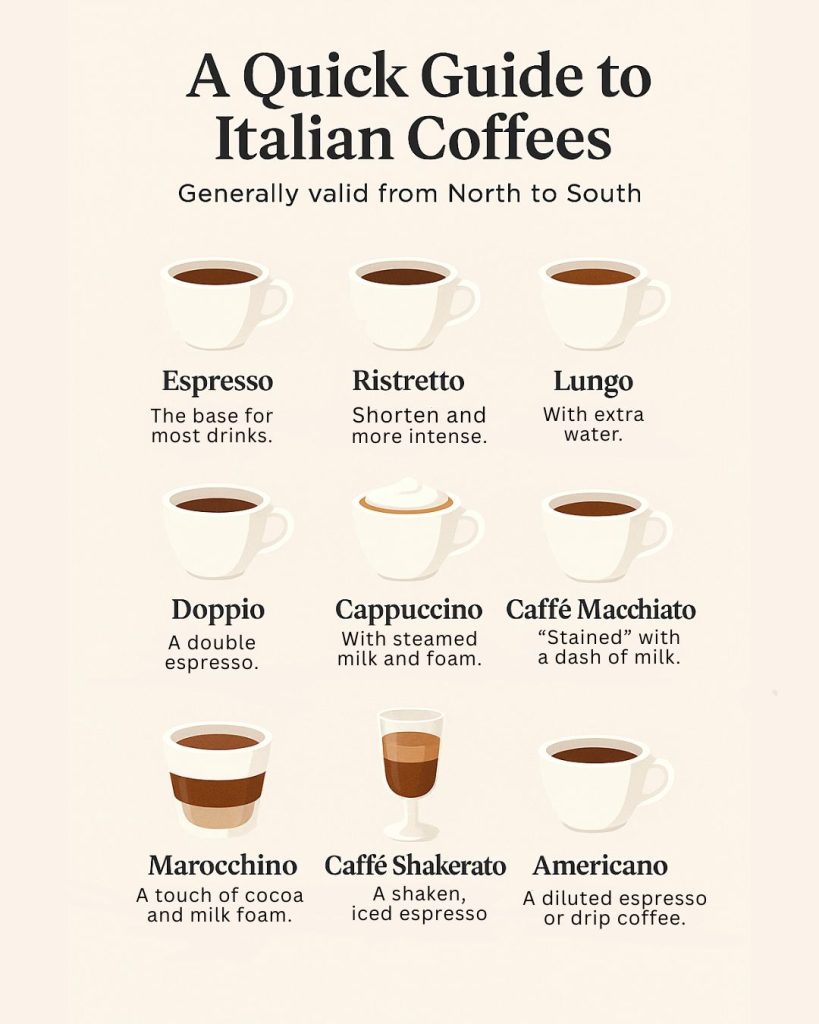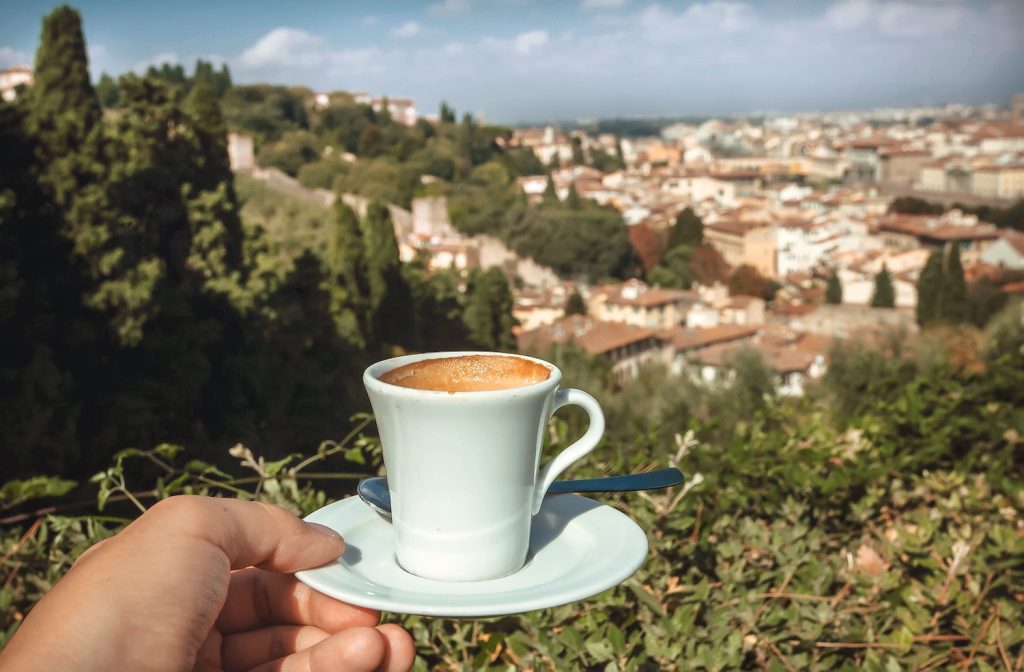Take a Pause and Start from the Beginning
If you think you know everything about Italian coffee, it might be time to start over.
In your Italian language classes, you probably learned that in Italy, you don’t ask for an espresso—you just order un caffè. Italians often drink it standing at the bar (in piedi al bancone), quickly, and ordering a cappuccino after 11 a.m. is basically a cultural faux pas.
You may also know the difference between a macchiato, ristretto, and doppio. Some even know what it means to order a caffè al vetro (served in a glass), or enjoy a caffè shakerato in summer and a caffè corretto (spiked with liquor) in winter.
But that’s just the beginning of the rich and varied Italian coffee culture. And we haven’t even mentioned whether to pay before or after, whether to tip, or whether to drink your water before or after your coffee.
So, is it really always like that?
Hate to break it to you—but no, not exactly.
There Are No Hard Rules
The truth is more flexible than you might think. Everything depends on where you are—the type of bar, the time of day, how busy it is, and, most importantly, which region or city you’re in.
A Quick Guide to Italian Coffees
(Generally valid from North to South)
Here are the most common types of caffè you’ll find across Italy:
- Espresso: The base for most drinks, strong and concentrated.
- Ristretto: Even shorter and more intense than an espresso.
- Lungo: An espresso with extra water.
- Doppio: A double espresso.
- Cappuccino: Espresso with steamed milk and milk foam, usually enjoyed in the morning.
- Caffè Macchiato: Espresso “stained” with a dash of milk (hot or cold).
- Marocchino: Espresso with cocoa and milk foam.
- Caffè Shakerato: A shaken, iced espresso—perfect for summer.
- Americano: A diluted espresso or drip coffee, served in a larger cup.

“Italy Is a Beautiful Mess”
Someone once said, “L’Italia è una bella confusione.” And it’s true.
Italy is a small country, but long and geographically diverse. Its northern borders touch Austria, Switzerland, France, and Slovenia. To the east and south, it opens to the Adriatic and Mediterranean Seas, facing Croatia, Albania, Greece, and even Tunisia.
Its complex history—unified only in 1861—created a colorful puzzle of languages, dialects, and traditions. That patchwork extends to its regional coffee rituals, too.
When Tuscany Meets Trieste: A Coffee Culture Clash

My students, confident ordering a macchiato, macchiatone, marocchino, or cappuccino in Tuscany, were completely baffled when they visited me in Friuli, in Italy’s far northeast.
Why? Because in Trieste—the true coffee capital of Italy—the locals speak their own coffee language.
Trieste: Italy’s Hidden Coffee Capital
You might think of Naples when it comes to Italian coffee traditions. And yes, Naples has an incredible coffee heritage.
But it’s Trieste that has long been considered la città del caffè—the coffee capital—thanks to its historic role in Europe’s coffee trade.
In the 1700s, when Trieste was part of the Austro-Hungarian Empire, it became a free port and a key hub for coffee imports. Later, elegant botteghe da caffè (coffee houses) emerged as social and cultural centers.
By the 19th century, Trieste’s roasters pioneered coffee blends, helping shape the flavor profiles we know today.
Even now, the city boasts one of Europe’s highest concentrations of roasteries and coffee companies. It remains a vibrant hub for importing, roasting, and exporting beans—and hosts festivals celebrating every aspect of coffee culture.
How to Order Coffee in Trieste: A Different Menu
Forget everything you thought you knew. Here in Trieste, the vocabulary changes entirely.
Here’s your local cheat sheet:
- Nero: An espresso in a cup.
- Nero in B: An espresso in a glass (in bicchiere).
- Capo: A macchiato in a cup.
- Capo in B: A macchiato in a glass.
- Gocciato / Goccia: An espresso with a single drop of milk foam.
- Caffelatte: In Trieste, this actually means a cappuccino!
Confused? That’s part of the charm.
Paese che vai, caffè che trovi
(Every city, its own coffee ritual)
So, what’s the takeaway?
Every city in Italy has its own flavor—not just in food, but in coffee too. Whether you’re in Rome or Palermo, Florence or Trieste, prepare to be surprised.
Forget rigid rules. Bring your curiosity, a bit of patience, and be ready to learn something new with every sip.
Buon caffè!
Read this article in Italian.
Want to test your language skills? Download the full article in Italian as a PDF and read it side-by-side with the English version.


